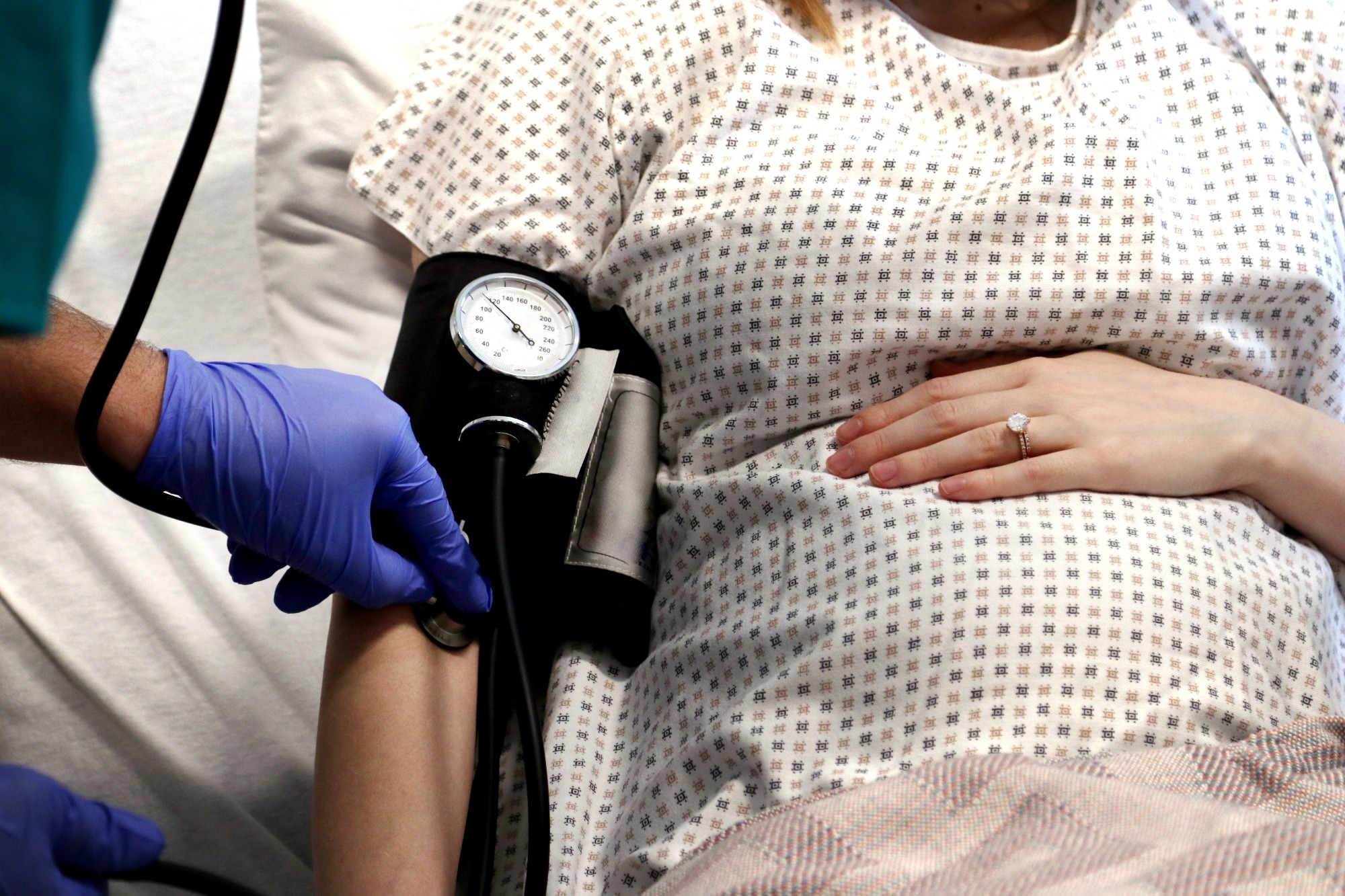Gestational hypertension has been recognized as one of the leading causes of maternal death worldwide.
 Study: Trajectory of blood pressure levels and weight gain in pregnant women: a group-based approach. Image Credit: James Ogden / Shutterstock.com
Study: Trajectory of blood pressure levels and weight gain in pregnant women: a group-based approach. Image Credit: James Ogden / Shutterstock.com
Background
The Brazilian Society of Cardiology described gestational hypertension as the presence of systolic blood pressure (SBP) greater than or equal to 140 mmHg, diastolic pressure (DBP) greater than or equal to 90mmHg, and headache or edema after the twentieth week of pregnancy.
Gestational hypertensive syndromes have been classified as gestational hypertension, mild or severe pre-eclampsia, eclampsia, chronic arterial hypertension and Hemolysis, Elevated Liver enzymes, and Low Platelets (HELLP) syndrome.
Previous studies have revealed the tendency of mean arterial blood pressure (BP) to decrease until the twentieth week of pregnancy, following which it increases until delivery. Women without any drop in BP in the middle of the gestational period might experience hypertensive disorders.
Placental-derived hormones appear to directly influence the BP trajectory. Furthermore, marginally elevated BP levels may increase the risk of antepartum and postpartum complications.
About the study
Over the past decade, a higher prevalence of obesity and incidence of hypertensive disorders have been observed in the Brazilian population. Furthermore, around 25% of maternal deaths in Brazil have been linked to arterial hypertension.
The current longitudinal, mixed-cohort study identified patterns of SBP trajectory during pregnancy. This study included pregnant women at all risk levels who received prenatal care in public health services in Paraná, Brazil, between March 2018 and November 2019.
In phase one of the study period, participants were asked about demographics, obstetric history, socioeconomic condition, and smoking and nutrition status through a questionnaire. Phase Two was conducted six months after Phase 1, during which researchers obtained relevant data linked to gestational age, SBP and DBP measurements, all weight measurements during prenatal care, medication, and the presence of edema from physical/electronic medical records of the pregnant women.
Study findings
A total of 604 pregnant women participated in the initial survey. All candidates with missing data were eliminated, which left 460 pregnant women considered in the present study. Interestingly, pregnant women with higher education were more likely to participate in the survey.
About 63% of the study participants were between 20 and 29 years of age. In this study cohort, 42% were in their first pregnancy, 3.5% used antihypertensive drugs, 7.3% reported smoking, 48.5% had eutrophic pregestational body mass index (BMI), and 28.8% were overweight.
A new strategy using a combination of statistical techniques and a trajectory model based on groups was adopted to study BP trajectory patterns in pregnant women. Mean SBP and DBP values of 110 mmHg and 70 mmHg, respectively, were observed. These values indicate a reduction in the second trimester, followed by a progressive increase in BP levels until the end of pregnancy.
Three different SBP patterns were identified and categorized as the slightest change in the trajectory, intermediate pattern, and highest BP trajectory. Women who started pregnancy with obesity, under antihypertensive drugs, or were highly educated were likelier to be placed under the greater trajectory of BP levels. However, when the pattern of weight gain during pregnancy was studied, no significant inclination of belonging to the higher SBP trajectory groups was observed.
The association between the prevalence of higher SBP and greater education could be attributed to older aged pregnant women. However, these women are more likely to present complete data, which indicates a greater adherence to prenatal recommendations.
Conclusions
One of the key limitations of this study is the follow-up losses, which were mainly due to the conversion of physical records to electronic records that occurred during the study period. Despite this limitation, the current study revealed that education, obesity, and hypertension are highly associated with a greater trajectory of SBP during pregnancy.
In the future, there is a need for better monitoring of the BP levels of pregnant women by trained and standardized indicators. Better documentation of these data will enable health professionals to access information and analyze them. In addition, it is important to assess how different patterns of BP trajectories impact pregnancy outcomes.
Journal reference:
- Beltrame, T. B., de Oliveira, A. C., Manera, F., et al. (2023) Trajectory of blood pressure levels and weight gain in pregnant women: a groupbased approach. Nutrition, Metabolism and Cardiovascular Diseases. doi:10.1016/ j.numecd.2023.06.006.